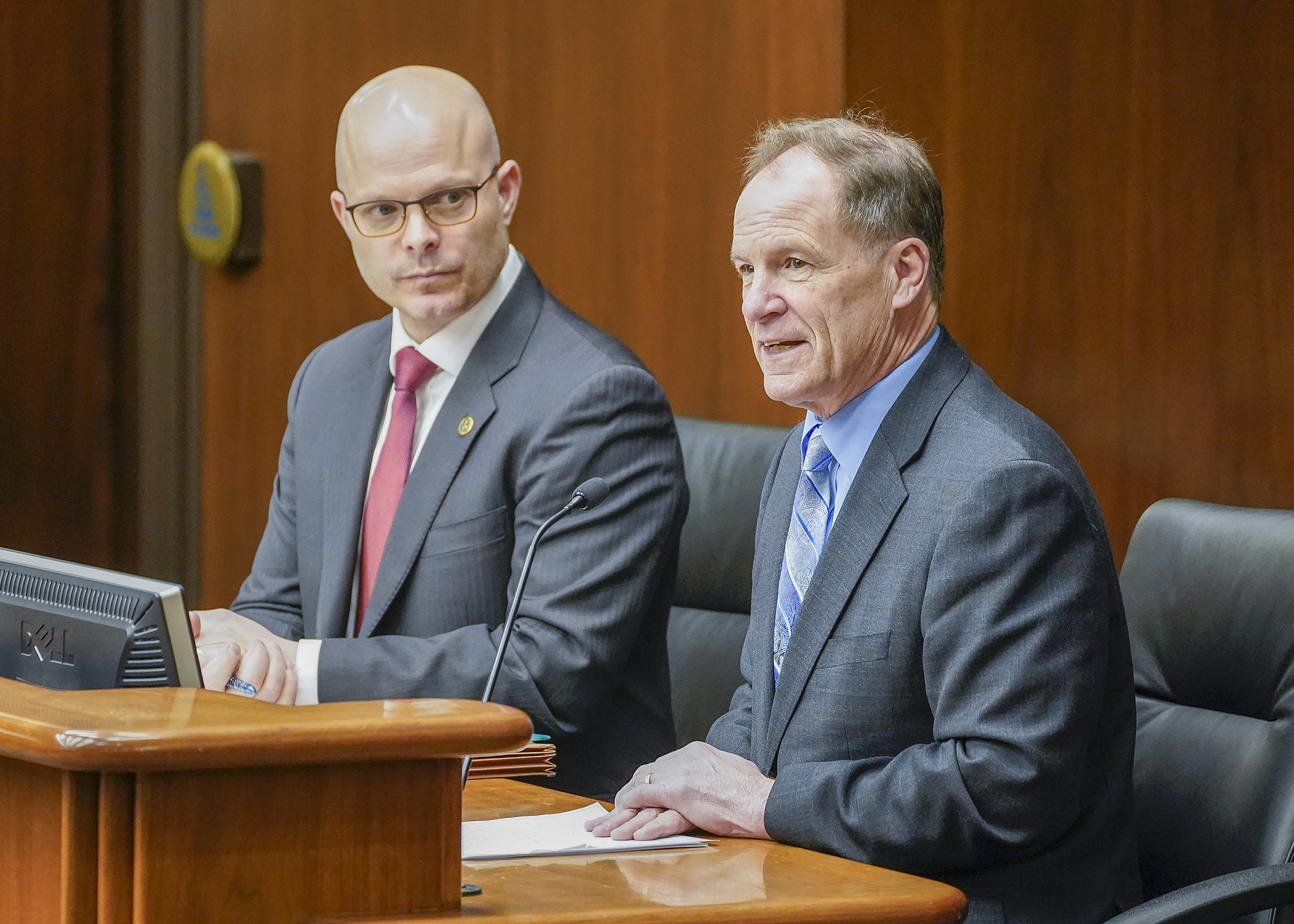Renters, cities and counties big beneficiaries of Property Tax Division report

Call it a mini-omnibus, or perhaps a sub-omnibus. The House Property Tax Division acts as something of a subcommittee of the House Taxes Committee, with its division report taking all proposed legislation it’s considered over the course of the session into account before selecting what to put in and leave out.
On Wednesday, the division learned of the fruits of this session’s labors.
Sponsored by Rep. Dave Lislegard (DFL-Aurora), HF1377 was replaced by a delete-all amendment, presented in a run-through by nonpartisan staff, and commented upon by state agency heads and various members of the public. Amendments, member discussion and division approval are expected Friday afternoon.
“This committee had a vision of peeling back the onion to really understand why property taxes were on the rise,” said Lislegard, the division chair. “And what are the tools and levers we could use to impact peoples’ lives in a positive way? I think this is a wonderful document that puts the state of Minnesota in the right direction.”
Among the bill’s 128 provisions, the largest projected change — from a total dollars point of view — would be converting the renter’s property tax refund into a refundable income tax credit. It’s projected that would reduce state tax revenue by $378.6 million in fiscal year 2025.
Every state resident could be affected by revisions to the formulas for local government aid and county program aid, which would have their appropriations increased for each program by $100 million in fiscal year 2025, with larger bumps in ensuing years.
The state’s soil and water conservation districts would at last have their own dedicated annual aid funding, which would amount to $12 million annually.
And $41.8 million in tax cuts would come from changes to the homestead credit property tax refund that would reduce all eligible homeowner co-pays by 5%.
[MORE: View the spreadsheet]
Here are some of the chief changes in the bill.
Property taxes: In addition to increasing the value thresholds and maximum exclusion amount for the homestead market value exclusion, the bill would modify the senior deferral program. It would also allow certain surviving spouses to apply for the market value exclusion for veterans with a disability.
Minerals taxes: The bill would convert the net proceeds tax into a gross proceeds tax and provide a onetime transfer from the property tax relief account.
Property tax aids, credits and refunds: In addition to modifying the local government aid and county program aid formulas and increasing their appropriations, and establishing soil and water conservation district aid, the bill would establish electric generation transition aid, and increase certain payments for payment in lieu of taxes.
Renter’s credit: In addition to changing this to a refundable income tax credit, the bill would change the income measure used to calculate the credit and make filing for it part of the income tax filing procedure.
Tax increment financing: There are multiple modifications to existing “TIF” law in the bill. And special TIF authorization would be granted to Chatfield, Duluth, Fridley, Lafayette, Nicollet, Plymouth, Shakopee, Spicer, West St. Paul and Woodbury. There would also be modifications to current TIF districts in Bloomington and Savage.
Local taxes: Cook County would have its lodging tax extended another 15 years, but would lose its authorization to impose an admissions tax. And Duluth would have a portion of its tourism tax extended.
And the state would get a new type of special service district in tourism improvement districts.
***
What’s in the bill?
The following are selected bills that have been incorporated in part or in whole into the property tax division report:.
- HF124 (Skraba)
- HF134 (Klevorn)
- HF236 (Freiberg)
- HF259 (L. Olson)
- HF263 (Tabke)
- HF307 (Richardson)
- HF335 (Hanson)
- HF428 (Clardy)
- HF514 (Lislegard)
- HF675 (Agbaje)
- HF735 (Reyer)
- HF825 (Lislegard)
- HF858 (Norris)
- HF875 (Becker-Finn)
- HF880 (Gomez)
- HF978 (Davids)
- HF1049 (Brand)
- HF1099 (Paul Anderson)
- HF1285 (Lislegard)
- HF1377 (Lislegard)
- HF1427 (Hill)
- HF1458 (Koegel)
- HF1463 (Hemmingsen-Jaeger)
- HF1471 (Kozlowski)
- HF1504 (Norris)
- HF1506 (Lislegard)
- HF1653 (Coulter)
- HF1721 (L. Lee)
- HF1727 (Wolgamott)
- HF1768 (Coulter)
- HF1802 (Urdahl)
- HF1871 (L. Olson)
- HF2012 (Lislegard)
- HF2172 (Hornstein)
- HF2239 (Swedzinski)
- HF2382 (L. Olson)
- HF2412 (L. Olson)
- HF2495 (L. Lee)
Related Articles
Search Session Daily
Advanced Search OptionsPriority Dailies
Speaker Emerita Melissa Hortman, husband killed in attack
By HPIS Staff House Speaker Emerita Melissa Hortman (DFL-Brooklyn Park) and her husband, Mark, were fatally shot in their home early Saturday morning.
Gov. Tim Walz announced the news dur...
House Speaker Emerita Melissa Hortman (DFL-Brooklyn Park) and her husband, Mark, were fatally shot in their home early Saturday morning.
Gov. Tim Walz announced the news dur...
Lawmakers deliver budget bills to governor's desk in one-day special session
By Mike Cook About that talk of needing all 21 hours left in a legislative day to complete a special session?
House members were more than up to the challenge Monday. Beginning at 10 a.m...
About that talk of needing all 21 hours left in a legislative day to complete a special session?
House members were more than up to the challenge Monday. Beginning at 10 a.m...